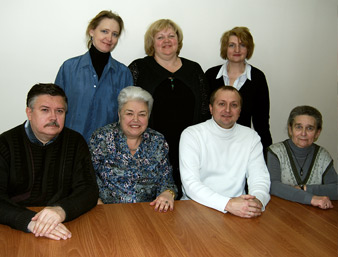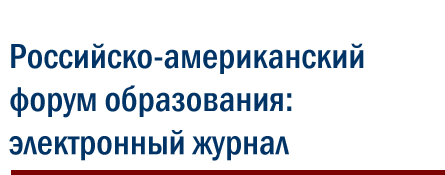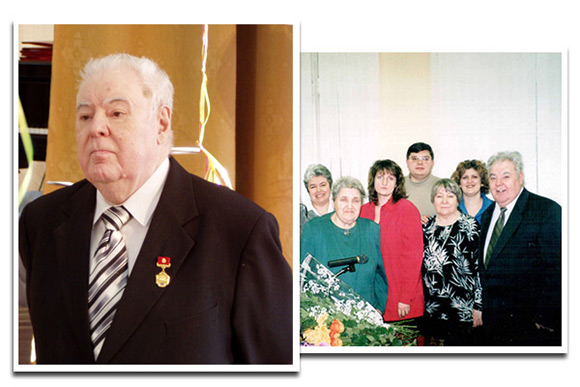

Volume: 7, Issue: 2
1/08/2015


1/08/2015
KEYWORDS: V.A. Karakovsky, principles of the new school, system of education, creative team activities, school communards' gathering, children’s self-government.
ABSTRACT: The paper introduces the work of Vladimir Abramovich Karakovsky, a prominent Russian educator and school principal, innovator and humanist.
They say that there are people who make the world go round and give the world something that will stay there for decades and, if you come across it, it will change your life. Speaking about such people in the world of education, we can’t but mention Vladimir Abramovich Karakovsky (1932-2015). His name is well known to many educators in America, Europe and Asia, and practically, to every teacher in Russia. Vladimir Karakovsky was one of those people who did not only introduce educational innovations but also promoted an overall democratization of schools.

Vladimir Karakovsky’s life is inseparable from his school. Upon graduation from Chelyabinsk Teaching Training Institute in 1953, he began his professional career as a teacher of the Russian language and literature at Chelyabinsk School #48. In 1962 he was appointed Principal at Chelyabinsk School #1. Having defended, under Professor Lyudmilla Novikova’s supervision, his Candidate of Science (equivalent of PhD) thesis in 1977, Vladimir Karakovsky continued his career as Principal, Moscow Secondary School #8252 (currently known nationwide as Karakovsky’s school), where he worked for 34 years.
It was here that Vladimir Karakovsky managed to create a unique school environment where teachers and children could be heard and where freedom of speech was respected. Such an environment became a true school of humanism for a great number of children and adults. In close cooperation with the Academy’s Center of educational theory, his school developed and implemented different innovative ideas. The latter included numerous ways of constructing positive educational spaces and systems, methods of provoking creative team activities during classes and after them, strategies of efficient school self-governance, team-building techniques, etc. Born in this school, educational innovations resulted in five post-doctorate and 31 PhD dissertations.
Of course, it took time and effort for the school to become what it is now. Before Karakovsky arrived, the school had been an ordinary educational establishment not favored by its students or teachers. This is how Karakovsky himself described his first impressions and steps at this school,
The military barrack-like cult and the atmosphere of uniformity dominated everything. Teachers were constantly under a strong pressure of a number of mandatory and routine activities like inspections, double inspections, tests, drills, reports, meetings, reviews, staff councils, etc. What about the results? It would be considered an achievement if 20 per cent of students maintained a steady interest in studies and demonstrated enough knowledge. With few exceptions, social and character education was mostly limited to a set of rigid regulations: mandatory moral and career-guidance classes, standardized political briefing, numerous councils and committees…(2, 8).
The new school had to be built from bottom up based on its bureaucratic foundation. However, Vladimir Karakovsky was inspired by many teachers’ desire to change school life for better, to reduce its formal character, “to improve relationships”, “to put an end to lies and slander among teachers” and “to increase morale.” (Those are all quotes from teachers’ responses to a questionnaire composed by a new principal).
It happened so that teachers’ ideas matched the principles formulated in the new school concept:
As the new school was unfolding, children and adults acquired a new common goal – self-realization in such spheres as creative activities, communication, games, sports, and labor. But the most consolidating and formative force that made it possible and allowed to achieve common goals and build democratic and responsible attitudes was creative team activities.
As Karakovsky recalled, when they started their search for such a consolidating activity, teachers badly wanted it to be instruction, to be the process connected with acquiring new knowledge. But the school was not ready for it yet – for most students classes were not attractive, teachers were concentrating only on their particular areas and were disintegrated, separate subject-oriented classrooms prevented communication, an a narrow focus on ‘instilling’ knowledge and forming skills could not really contribute to the integration of educational efforts. All the above mentioned, as Karakovsky wrote, brought about “a decision to turn attention to after-school activities. Only in that case, everyone was on roughly equal terms without a mandatory pressure, which allowed to provide all the participants with comfortable conditions and personal freedom” (2, 11). That was the beginning of real success of creative team activities in this school.
An epicenter and the most intensive way of organizing creative team activities is the so called school communards' gathering. It is difficult to offer a simple description of this phenomenon. Karakovsky himself compared a communards' gathering to a young people’s commune (2, 18). Indeed, such a gathering is a representation of an ideal social structure, a model of perfect relationships among people. And it possesses the most powerful educational potential. “On the one hand, a communards' gathering helps students see the gap between an ideal life and a routine, and on the other hand, it encourages both students and teachers to change the life of their school and improve its system of education” (3, 37).
As a rule, a communards' gathering lasts three days and takes place somewhere out of town. Each day is filled with various creative team activities including the two most significant ones (the participants get ready for them long before the gathering): the Main Philosophical activity and the Main Creative activity. The first means that the communardswill think over and present their vision of some philosophical, political or moral issue. The latter involves a demonstration of the participants’ creative potential, skills and abilities within the boundaries of certain topic. Each day ends up with a joint “camp fire” where students and adults discuss and analyze their daily. But the discussion is not limited only to the activities. The conversation may be about the individual participants who made the biggest contribution, did something good or managed to prove their point. This is how one of the communards described their gathering: “…Here you understand that any word is a significant deed; we seem to have gained more energy after the “camp fire”, and it is not hard to see reason: you have been noticed and praised – so you can be of some use to others” [quoted from 4, 59].
Many other creative team activities have gradually turned into school traditions. Among them are September hikes, aimed at uniting classmates after summer vacations, striking singing festivals, professionally held high school students’ humor contests, middle school students’ gatherings, and a festival of knowledge with various conferences, briefings, and expert tournaments. One should also mention poster presentations, which describe the class life during the whole year, rewards for different achievements or creative gifts to the school. A very special event is a “Victory Dawn” when, early on the 8th of May, all volunteering students, teachers, and parents take the first subway train to the Red Square to lay flowers at the Tomb of the Unknown Soldier.
All these activities, called key events, serve as a core of the schoolwork through the year. No key event can possibly happen without such necessary steps as collective planning, collective implementation and a collective analysis of the results.
It is not surprising that in such a school students’ self-governance is gaining more importance and consists of the Big Council, Communards’ Council, provisional class commanders, and provisional activity councils.
Thanks to Karakovsky, these and many other educational initiatives have become an integral part of school activities throughout Russia and abroad. Karakovsky’s expertise as well as his school’s practice have become a subject of studies in many parts of the world. Karakovsky’s books – Educational edges, Without a call for a break between classes, Ways of putting together a school collective, Raise a citizen, To become an individual, and The school of shaping a character: Route #825 will remain attractive for both researchers and practitioners for years to come.
Let us emphasize one more professional feature that Karakovsky possessed. He was not only a brilliant educator but also a prominent researcher. He was one of those rare practitioners who could derive fruitful ideas from his actual work with teachers and students. It is no accident that Karakovsky became a corresponding member of the Russian Academy of Education. Very few school principals could be compared to him. Vladimir Karakovsky and his scientific advisor Lyudmilla Novikova spoke and wrote about theoretical ideas in such a clear way that every teacher would understand them.
Without any doubt Karakovsky was also a gifted public speaker and an untiring advocate of educational innovations. His lectures were well known throughout the country, and his speeches were recorded for radio and television.
Vladimir Karakovsky was successful in creating a unique educational institution, which kept its doors open to graduates who could visit and stay not only as teachers but also as friends, helpers and, what is very important, as parents who would bring their own children to this school. To create all that was possible only to such special people as Vladimir Karakovsky. He was always known for his honesty, frankness and spiritual courage, which could miraculously go along with kindness, romanticism and unconquerable faith in people.
Bibliography
See the official website of Moscow School #825: http://sch825.ru
Home | Copyright © 2025, Russian-American Education Forum